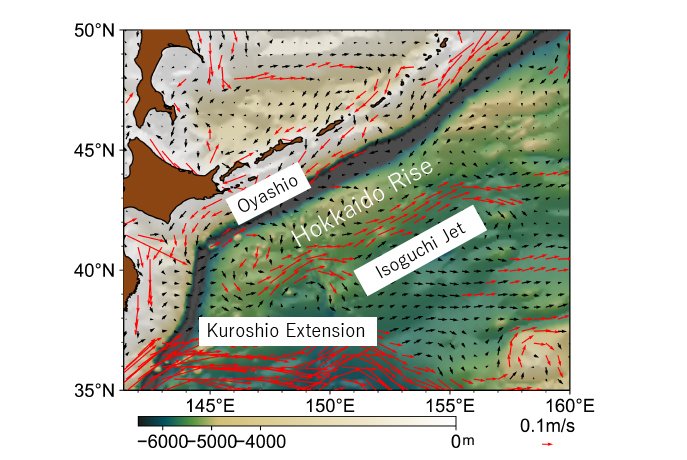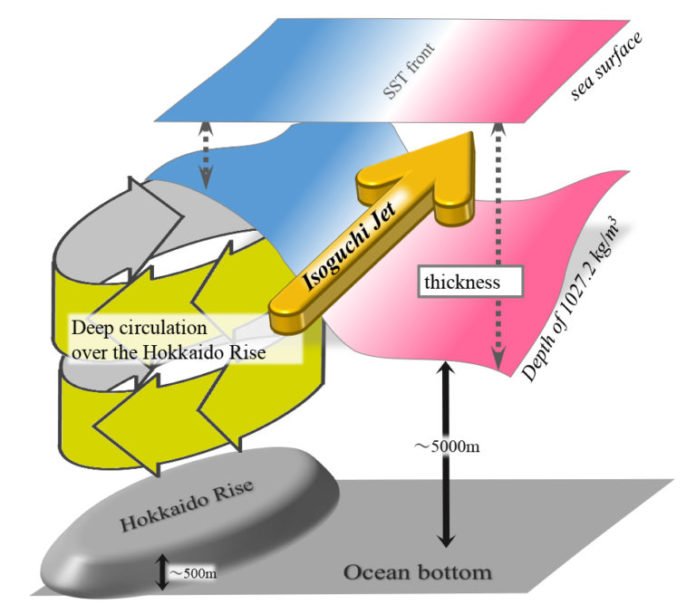In the 2000s, pathways transporting warm water beginning in the Kuroshio Current, a northward-streaming ebb and flow on the western side of the North Pacific, were found 1,000 kilometers off eastern Hokkaido, northern Japan. These pathways, which are constantly found in nearly similar areas, are called quasi-stationary planes or Isoguchi Jets.
Isoguchi Jets transport warm water to sea zones off Hokkaido and thus creates sharp SST fronts between the warm water and the cold water from the Oyashio Current, a subarctic current that passes through southward in the western North Pacific.
Investigations have discovered that SST varieties in the Subarctic Frontal Zone (SAFZ) can cause extensive effects on extratropical barometrical courses in the Northern Hemisphere, a factor activating environmental change. A different report demonstrated Isoguchi Jets impacts on the marine assets. In any case, much has stayed obscure about the Isoguchi Jets, including why they shape quasi-stationary far from the shore.

In a new study by the Hokkaido University, scientists examined the role of sea-floor topography with low rises measuring 500 meters at the depth of 5,500 meters. Scientists mainly focused on propagation of Rossby waves, a natural ocean phenomenon caused by the Earth’s turn which is redirected by vortex driven streams over base ascents.
Scientists found that due to the redirection of Rossby wave proliferation, a thin upper layer starting in the subarctic gyre and a thick layer beginning in the subtropical gyre merge at locations where Isoguchi Jets exist, along these lines making thickness bounces and causing the surface planes.
These results were obtained by the JCOPE2 ocean reanalysis conducted by the Japan Agency for Marine-Earth Science and Technology.
Humio Mitsudera said, “Because many low seabed rises are observed across the globe, a similar mechanism might be at work at various sea zones in mid- to high-latitude ocean zones. We are now conducting theoretical research on simplified topography to generalize the mechanism for surface jets.”
The study is published in the journal Nature Communications.
